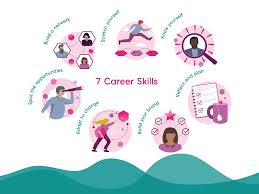STEM education—encompassing Science, Technology, Engineering, and Mathematics—is pivotal in shaping the future workforce and addressing global challenges. As technology continues to advance and societal needs evolve, the importance of STEM education grows. This article explores why STEM education matters, its benefits, and how it prepares students for the future. 1. The Importance of STEM Education STEM education is crucial for several reasons: Driving Innovation: STEM fields are at the forefront of technological advancements and innovations. Education in these areas equips students with the skills to develop new technologies, improve existing systems, and drive progress in various industries. Solving Global Challenges: STEM skills are essential for addressing complex global issues such as climate change, health care, and energy sustainability. Scientists, engineers, and technologists work on solutions to these pressing challenges. Economic Growth: STEM careers often lead to high-paying jobs and contribute significantly to economic growth. A strong STEM workforce drives innovation, increases productivity, and enhances global competitiveness. Enhancing Critical Thinking: STEM education fosters critical thinking, problem-solving, and analytical skills. These skills are valuable not only in STEM careers but also in everyday life and decision-making. 2. Benefits of STEM Education STEM education provides numerous benefits to students and society: Career Opportunities: STEM fields offer a wide range of career opportunities with diverse applications. From engineering and data science to biotechnology and environmental science, STEM careers are in high demand. Skill Development: STEM education develops essential skills such as mathematical reasoning, scientific inquiry, technological proficiency, and engineering design. These skills are transferable and applicable across various professions. Encouraging Creativity: While STEM is often associated with technical skills, it also encourages creativity and innovation. Solving complex problems often requires creative thinking and novel approaches. Fostering Collaboration: Many STEM projects involve teamwork and collaboration. Working on group projects helps students develop interpersonal skills, learn to manage conflicts, and appreciate diverse perspectives. 3. Implementing STEM Education Effective STEM education involves integrating various teaching strategies and resources: Hands-On Learning: Engage students with hands-on experiments, projects, and real-world problem-solving. Experiential learning helps solidify theoretical concepts and makes STEM subjects more engaging. Interdisciplinary Approach: Combine science, technology, engineering, and mathematics in interdisciplinary projects. For example, a project on building a sustainable energy solution can incorporate elements from all four STEM areas. Technology Integration: Utilize technology in the classroom to enhance learning experiences. Tools such as simulations, educational software, and online resources can make STEM concepts more accessible and interactive. Industry Partnerships: Collaborate with industry professionals and organizations to provide students with real-world insights and experiences. Internships, guest lectures, and field trips can bridge the gap between education and industry. Encouraging Curiosity: Foster a culture of curiosity and exploration. Encourage students to ask questions, seek answers, and explore topics of interest related to STEM fields. 4. Addressing Challenges in STEM Education While STEM education is essential, it faces several challenges: Equity and Inclusion: Ensuring that all students have equal access to quality STEM education is crucial. Addressing disparities in resources, representation, and opportunities helps create a more inclusive STEM community. Keeping Up with Rapid Changes: The fast pace of technological advancement requires continuous updates to STEM curricula and teaching methods. Educators must stay current with new developments and integrate them into their instruction. Engaging All Students: Making STEM subjects engaging for all students, including those who may not initially show interest, is important. Diverse teaching methods and relatable examples can help capture students' interest. 5. The Future of STEM Education The future of STEM education involves: Emerging Technologies: Incorporating new technologies such as artificial intelligence, robotics, and biotechnology into the curriculum prepares students for the evolving job market. Global Collaboration: Promoting international collaboration and global perspectives in STEM education helps students understand global challenges and work on solutions that have a worldwide impact. Lifelong Learning: Encouraging a mindset of lifelong learning ensures that individuals continue to develop STEM skills throughout their careers, adapting to new technologies and industry changes.
STEM Education: Why Science, Technology, Engineering, and Math Matter
STEM education is fundamental to preparing students for the future, driving innovation, solving global challenges, and fostering critical skills. By integrating hands-on learning, interdisciplinary approaches, and technology, educators can enhance STEM education and inspire the next generation of scientists, engineers, and technologists. Addressing challenges and embracing the future of STEM education will ensure its continued relevance and impact.
- Details

